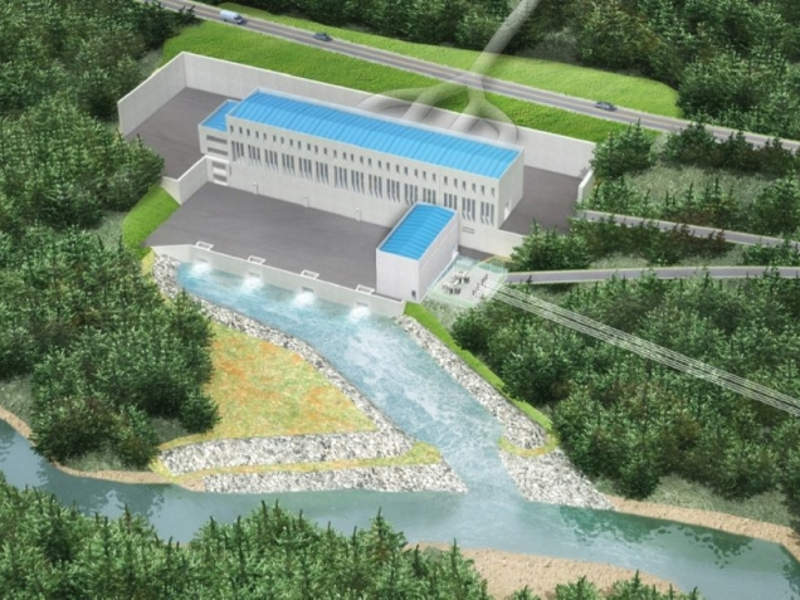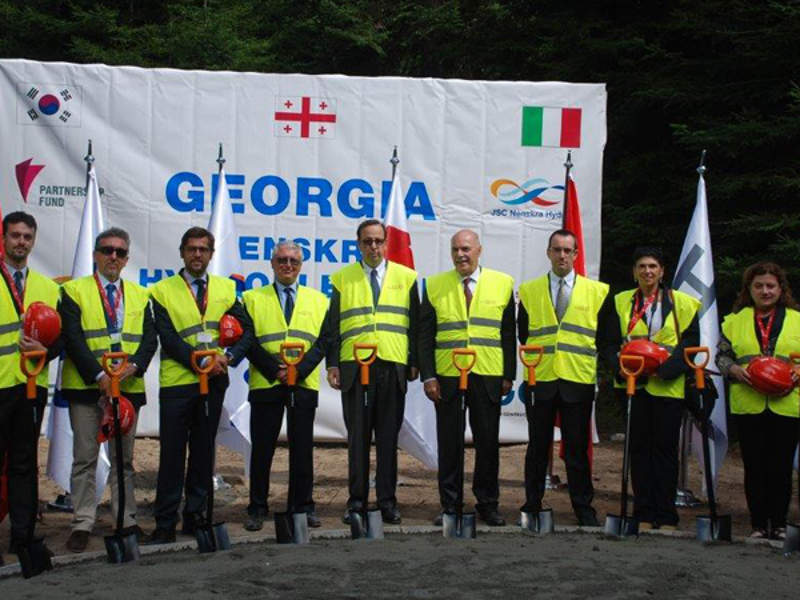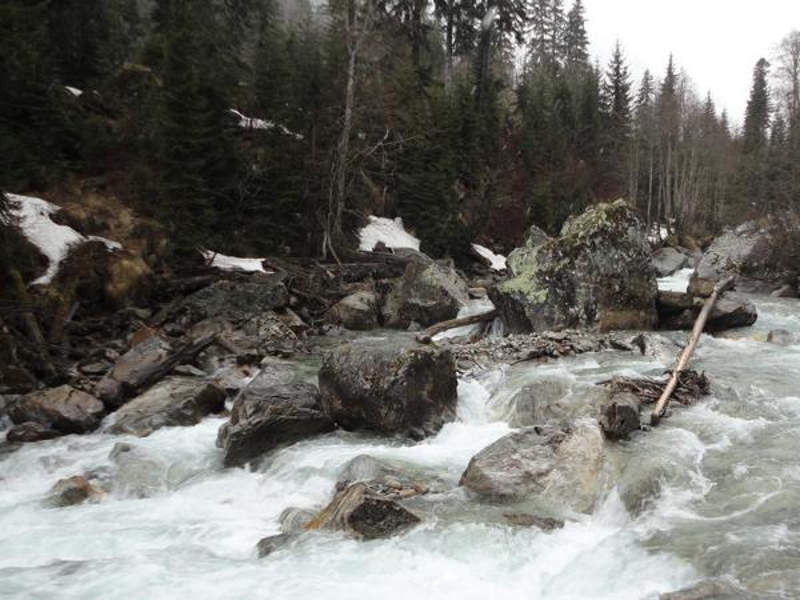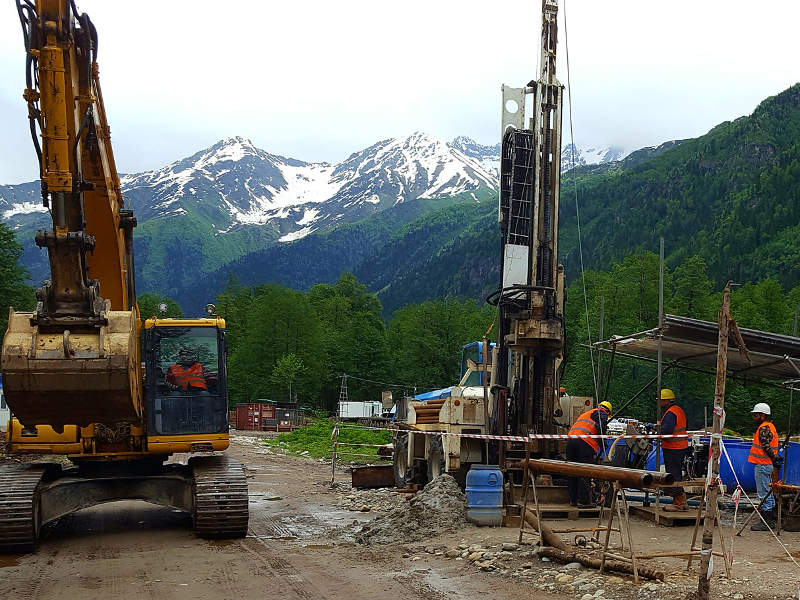The Nenskra hydropower plant is planned to be developed on the Nenskra and Nakra Rivers in the Svaneti region of Georgia. With an installed capacity of 280MW, it will be Georgia’s biggest strategic hydropower plant upon completion.
Estimated to cost approximately $1.08bn, the project is expected to produce 1,219GWh of energy a year, including 259.2GWh of guaranteed supply in the winter months.
Pre-feasibility study of the project was completed in March 2010 and the feasibility study finished in 2011. The final version of the Environmental and Social Impact Assessment (ESIA), which began in 2011, was submitted to the government in 2015.
Construction of the hydropower plant commenced in September 2015 while operations are expected to begin in 2020. The plant is expected to be fully completed in 2021.
Korea Water Resource Corporation (K-Water) and JSC Partnership Fund have formed a joint venture named JSC Nenskra Hydro for developing the project, which is backed by the Georgian Government.
Nenskra hydropower plant development
The Nenskra hydropower project is being developed on a build-operate-transfer (BOT) model with a concession period of 36 years, following which the ownership of the project will be transferred to the government.
Being developed on the Nenskra River, a tributary of Enguri, the asphalt face rock fill dam will be 130m-tall and 870m-long. The dam will have a storage capacity of approximately 176 million cubic metres (Mm³) and is estimated to have a reservoir area of 2.7km² at full supply level.
The project will include a 15.6km-long headrace tunnel with a diameter of 4.5m, a pressure shaft, and a 1,790m-long underground penstock. The head race tunnel will connect to the surface penstock upstream of the powerhouse.
A 12.25km-long transfer tunnel will be used during the construction to re-route part of the Nakra river into the Nenskra reservoir. To be situated on the River Nakra, the intake weir is expected to be 9m-tall and will have a crest length of 50m.
The water will be transported from the headrace tunnel down to the powerhouse through a 1,790m-long buried penstock of 3m diameter.
Nenskra power plant make-up
The power house will be above-ground and will be located on the left bank of the Nenskra river. It will consist of three 93MW vertical Pelton turbines having a capacity of 16m³/s each.
The powerhouse will also include transformers, control room, and a gas-insulated substation (GIS) switchyard.
Financing of Nenskra HPP
The Georgian hydropower project is being financed through an 30% equity and a 70% debt.
European Bank for Reconstruction and Development (EBRD) will invest $15m for an equity share in JSC Nenskra Hydro. EBRD is also providing a senior secured loan of $214m for the project development. Other equity shareholders in the JV are K-Water and Georgia’s state-owned Partnership Fund.
The Korea Development Bank (KDB) provided an $87.6m loan, while the European Investment Bank (EIB) approved a senior loan of $150m for the project on 6 February 2018.
The lenders group also includes Korea Exim Bank, Asian Development Bank, and SACE.
Transmission and off-take of power generated at Nenskra
Power generated at the project will be transferred to the Akhari-Jvari substation through a new 220kV transmission line.
Georgian State Electrosystem (GSE) is responsible for the design, construction, installation, and maintenance of the transmission line and its connection facilities.
Electricity System Commercial Operator (ESCO) will purchase 100% of the electricity generated at Nenskra. The sale will be made under a 36-year power purchase agreement (PPA).
Contractors involved
Salini Impregilo was awarded the $575m engineering, procurement and construction (EPC) contract for the project. The company has awarded a subcontract to Georgian Construction Consortium (GCC) for the project.
In October 2015, Salini-Impregilo engaged Lombardi to carry out the final design and the detailed design of the hydropower plant.
International Finance Corporation (IFC), who was engaged as project adviser for JSC Nenskra Hydro, subcontracted Castalia to conduct a cost-benefit analysis for the project.
Gamma Consulting prepared the environmental and social impact assessment (ESIA) report, while Stucky prepared the preliminary feasibility study and feasibility study reports.
K Water has engaged Hydro Engineering Consultancy (HEC) as a consultant for the project.







